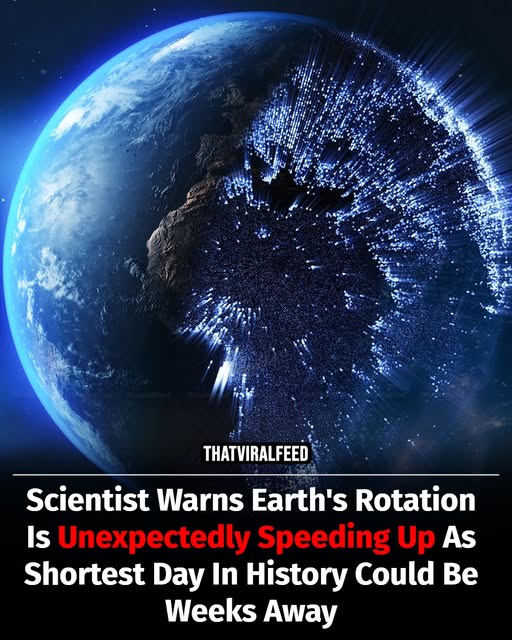This summer, planetary scientists have detected an unusual uptick in Earth’s rotational speed. Atomic clocks are recording days that are up to 1.5 milliseconds shorter than the standard 86,400 seconds. This pattern has triggered an unprecedented sequence of “fast days,” with more on the horizon.
Record-Breaking Days: July 9, July 22 & August 5
On July 9, 2025, Earth completed its rotation 1.3–1.6 milliseconds faster than a normal day, marking the shortest day ever measured. Scientists predict similar shortened days on July 22 and August 5, each potentially shedding 1.3–1.5 milliseconds. Since 2020, this summer trend marks the sixth record-breaking short day—a clear indicator of a shift in Earth’s rotational behavior.

Why Is This Happening?
Lunar Position
Earth’s spin has been subtly influenced by the Moon. During times when the Moon’s orbit brings it furthest north or south of Earth’s equator, rotational speed increases slightly. The predicted dates coincide with these lunar positions.
Internal Dynamics
Astrophysicists like Leonid Zotov from Moscow State University note that internal processes—such as shifts in the molten core, tectonic mass redistribution, ocean currents, and atmospheric dynamics—play a significant role; current models can’t fully explain the trend.
Implications for Timekeeping
Precision Systems
Though 1–2 milliseconds goes unnoticed by humans, this variation matters for atomic clocks, GPS, satellite communication, and global data networks.
Negative Leap Second
Traditionally, we add leap seconds when Earth’s rotation slows to keep atomic time (UTC) aligned. The unexpected acceleration may force the first-ever negative leap second—subtracting a second—from UTC, likely in 2029.
Historical Context
Earth’s day length is not fixed: Bronze Age days lasted about 23 hours, and millions of years ago, days might have been under 6 hours long. Prior to 2020, rotational speed was gradually slowing due to tidal friction from the Moon. The sudden reversal post-2020 shattered previous records, culminating in the shortest day ever (−1.66 ms) in July 2024.
Will Rotation Slow Down Again?
While experts believe the long-term trend remains toward slower rotation, recent acceleration remains unexplained. Zotov cautions that Earth might decelerate in the future, but the ongoing anomalies highlight complex, unpredictable planetary dynamics.
Final Takeaway
- Key Dates: July 9, July 22, August 5—expect the shortest days on record.
- Magnitude: Tiny dips of 1–1.6 milliseconds matter for precision industries.
- Why It Matters: May trigger a historic negative leap second in 2029 to keep UTC aligned.
- Still a Mystery: The roles of lunar alignment, core dynamics, and atmospheric interactions remain under study.
Although these changes won’t alter your daily routine, they offer a rare glimpse into Earth’s dynamic systems. The precise work of atomic clocks helps us understand and respond to planetary shifts—even milliseconds matter.

Conclusion
While a few milliseconds may seem insignificant, Earth’s accelerating rotation has profound implications for science and technology. The recent record-breaking short days, including July 9, highlight how dynamic and unpredictable our planet truly is. From lunar influences to core activity, the exact causes remain a subject of ongoing research. Looking ahead, the potential introduction of a negative leap second would mark a historic shift in timekeeping—something that’s never been done before. Although everyday life won’t be noticeably affected, this phenomenon underscores the importance of precise global systems like GPS, communication networks.

















